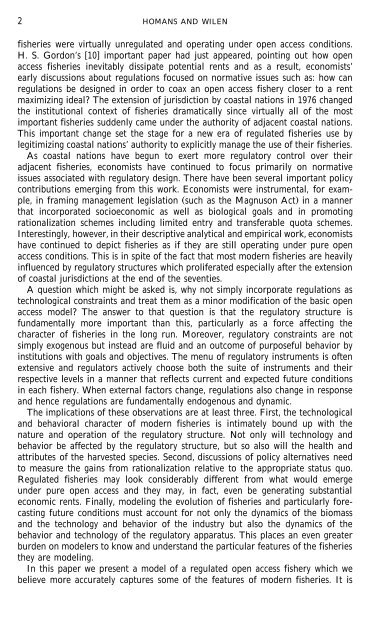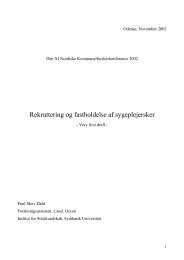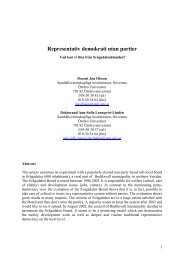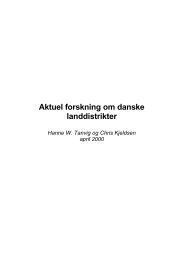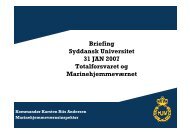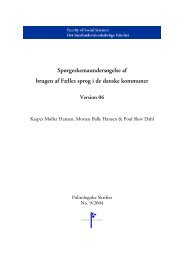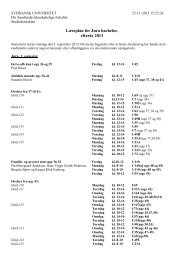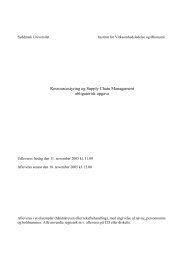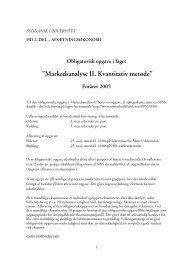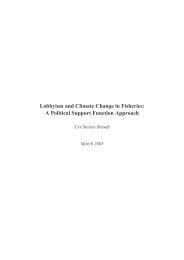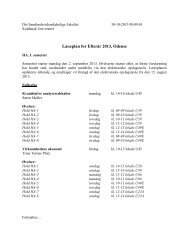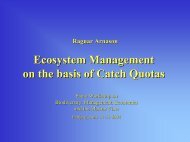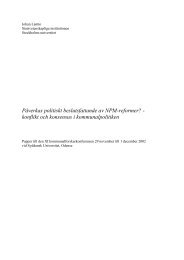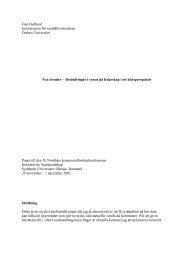A Model of Regulated Open Access Resource Use
A Model of Regulated Open Access Resource Use
A Model of Regulated Open Access Resource Use
You also want an ePaper? Increase the reach of your titles
YUMPU automatically turns print PDFs into web optimized ePapers that Google loves.
2<br />
HOMANS AND WILEN<br />
fisheries were virtually unregulated and operating under open access conditions.<br />
H. S. Gordon’s 10<br />
important paper had just appeared, pointing out how open<br />
access fisheries inevitably dissipate potential rents and as a result, economists’<br />
early discussions about regulations focused on normative issues such as: how can<br />
regulations be designed in order to coax an open access fishery closer to a rent<br />
maximizing ideal? The extension <strong>of</strong> jurisdiction by coastal nations in 1976 changed<br />
the institutional context <strong>of</strong> fisheries dramatically since virtually all <strong>of</strong> the most<br />
important fisheries suddenly came under the authority <strong>of</strong> adjacent coastal nations.<br />
This important change set the stage for a new era <strong>of</strong> regulated fisheries use by<br />
legitimizing coastal nations’ authority to explicitly manage the use <strong>of</strong> their fisheries.<br />
As coastal nations have begun to exert more regulatory control over their<br />
adjacent fisheries, economists have continued to focus primarily on normative<br />
issues associated with regulatory design. There have been several important policy<br />
contributions emerging from this work. Economists were instrumental, for example,<br />
in framing management legislation Ž such as the Magnuson Act.<br />
in a manner<br />
that incorporated socioeconomic as well as biological goals and in promoting<br />
rationalization schemes including limited entry and transferable quota schemes.<br />
Interestingly, however, in their descriptive analytical and empirical work, economists<br />
have continued to depict fisheries as if they are still operating under pure open<br />
access conditions. This is in spite <strong>of</strong> the fact that most modern fisheries are heavily<br />
influenced by regulatory structures which proliferated especially after the extension<br />
<strong>of</strong> coastal jurisdictions at the end <strong>of</strong> the seventies.<br />
A question which might be asked is, why not simply incorporate regulations as<br />
technological constraints and treat them as a minor modification <strong>of</strong> the basic open<br />
access model? The answer to that question is that the regulatory structure is<br />
fundamentally more important than this, particularly as a force affecting the<br />
character <strong>of</strong> fisheries in the long run. Moreover, regulatory constraints are not<br />
simply exogenous but instead are fluid and an outcome <strong>of</strong> purposeful behavior by<br />
institutions with goals and objectives. The menu <strong>of</strong> regulatory instruments is <strong>of</strong>ten<br />
extensive and regulators actively choose both the suite <strong>of</strong> instruments and their<br />
respective levels in a manner that reflects current and expected future conditions<br />
in each fishery. When external factors change, regulations also change in response<br />
and hence regulations are fundamentally endogenous and dynamic.<br />
The implications <strong>of</strong> these observations are at least three. First, the technological<br />
and behavioral character <strong>of</strong> modern fisheries is intimately bound up with the<br />
nature and operation <strong>of</strong> the regulatory structure. Not only will technology and<br />
behavior be affected by the regulatory structure, but so also will the health and<br />
attributes <strong>of</strong> the harvested species. Second, discussions <strong>of</strong> policy alternatives need<br />
to measure the gains from rationalization relative to the appropriate status quo.<br />
<strong>Regulated</strong> fisheries may look considerably different from what would emerge<br />
under pure open access and they may, in fact, even be generating substantial<br />
economic rents. Finally, modeling the evolution <strong>of</strong> fisheries and particularly forecasting<br />
future conditions must account for not only the dynamics <strong>of</strong> the biomass<br />
and the technology and behavior <strong>of</strong> the industry but also the dynamics <strong>of</strong> the<br />
behavior and technology <strong>of</strong> the regulatory apparatus. This places an even greater<br />
burden on modelers to know and understand the particular features <strong>of</strong> the fisheries<br />
they are modeling.<br />
In this paper we present a model <strong>of</strong> a regulated open access fishery which we<br />
believe more accurately captures some <strong>of</strong> the features <strong>of</strong> modern fisheries. It is


